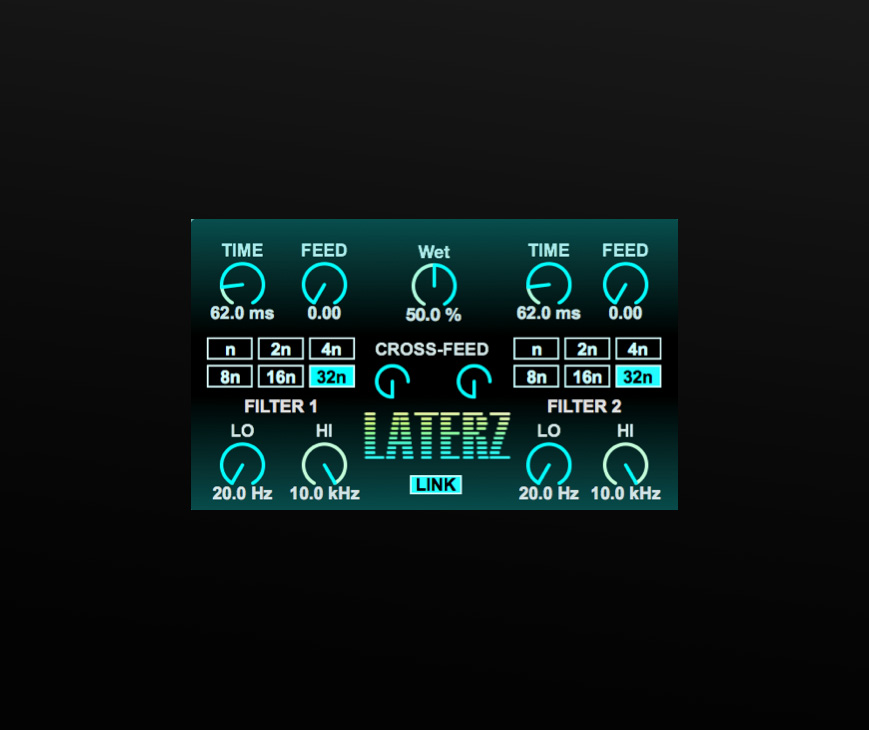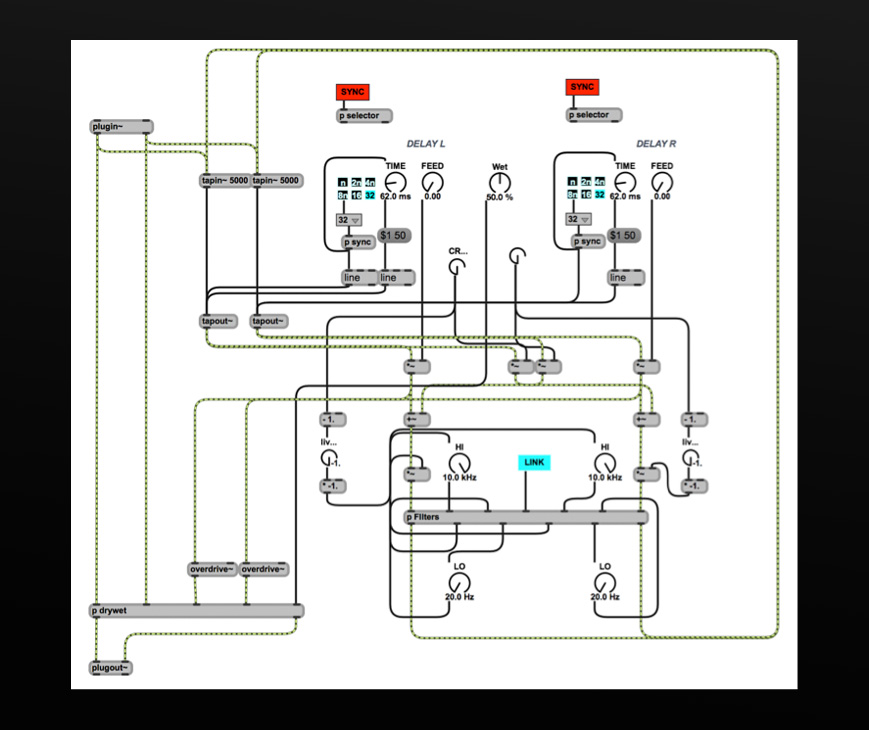Laterz M4L Delay Plugin
The delay effect is one of the most important processors in electronic music production. Apart from its evident creative applications, it is the basis for the construction of other processors. For instance, reverb, flanger, chorus; all can be constructed using delays, and it is common to find it in the architecture of different effects and processors.
Laterz is a dual sync stereo delay effect created either to expand the creative palette of your synths or to be used with other devices.
LATERZ FEATURES:
· Stereo delay fx
· 2 time modes: Tempo synced / free
· Time, feedback, rate controls
· Improved feedback range + overdrive
· 1 lopass filter per channel
· 1 delay unit per channel
· 1 hipass filter per channel
This effect is based in the binomial [tapin~] – [tapout~], which receives a signal in ([tapin~]) and copies it into a delay line that can be read at various delay times ([tapout~]). In general terms, the architecture of any delay is quite simple and it has some common parameters such as time and feedback. In this case in particular – apart form these standard controls – some extra features have been added to improve the potential use of the unit.
The delay time and feedback parameters of each channel can be controlled in the GUI via [live.dial objects]. Inside the circuit, these controls are connected to the [tapout~] objects through two [line] objects to prevent clicks when knobs are tweaked or automated. The [p sync] module has also been included in the architecture to allow tempo sync of both delays. One of the extras of Laterz is the crossfeed function integrated after both [tapout~] objects, which permits the sending of a desired amount of the signal from one delay to the other. This feature has been implemented using a simple [+~] (add) object to cross the signal between delay units. Another feature of Laterz is that it has a pair of overdrive units at the end of the circuit created with two [overdrive~] objects. This, together with an extended Feedback range (0- 1.20), enables the unit for the creation of distorted delays like in the retro tape-delay devices. Two linkable hipass/lopass filters created with four [onepole~] objects completes the functionality of this delay unit. The amount of delay is user controllable (Wet control) and has been implemented inside [p drywet] patcher using [*~] objects and a [line~] object to smooth the transitions when the control is tweaked in the GUI.
Press the blue arrow below to download!

